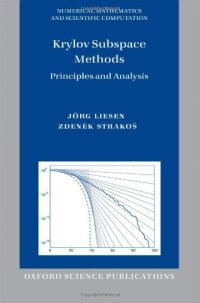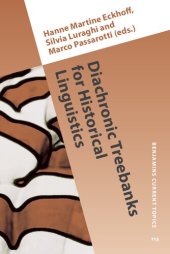
Ebook: Krylov Subspace Methods: Principles and Analysis
Author: Jorg Liesen Zdenek Strakos
- Tags: Applied Biomathematics Differential Equations Game Theory Graph Linear Programming Probability Statistics Stochastic Modeling Vector Analysis Mathematics Science Math Matrices Algebra Trigonometry Calculus Geometry New Used Rental Textbooks Specialty Boutique
- Series: Numerical Mathematics and Science Computation
- Year: 2012
- Publisher: Oxford University Press
- Edition: 1
- Language: English
- pdf
The mathematical theory of Krylov subspace methods with a focus on solving systems of linear algebraic equations is given a detailed treatment in this principles-based book. Starting from the idea of projections, Krylov subspace methods are characterised by their orthogonality and minimisation properties. Projections onto highly nonlinear Krylov subspaces can be linked with the underlying problem of moments, and therefore Krylov subspace methods can be viewed as matching moments model reduction. This allows enlightening reformulations of questions from matrix computations into the language of orthogonal polynomials, Gauss-Christoffel quadrature, continued fractions, and, more generally, of Vorobyev's method of moments. Using the concept of cyclic invariant subspaces, conditions are studied that allow the generation of orthogonal Krylov subspace bases via short recurrences. The results motivate the important practical distinction between Hermitian and non-Hermitian problems. Finally, the book thoroughly addresses the computational cost while using Krylov subspace methods. The investigation includes effects of finite precision arithmetic and focuses on the method of conjugate gradients (CG) and generalised minimal residuals (GMRES) as major examples.
There is an emphasis on the way algebraic computations must always be considered in the context of solving real-world problems, where the mathematical modelling, discretisation and computation cannot be separated from each other. The book also underlines the importance of the historical context and demonstrates that knowledge of early developments can play an important role in understanding and resolving very recent computational problems. Many extensive historical notes are included as an inherent part of the text as well as the formulation of some omitted issues and challenges which need to be addressed in future work.
This book is applicable to a wide variety of graduate courses on Krylov subspace methods and related subjects, as well as benefiting those interested in the history of mathematics.
There is an emphasis on the way algebraic computations must always be considered in the context of solving real-world problems, where the mathematical modelling, discretisation and computation cannot be separated from each other. The book also underlines the importance of the historical context and demonstrates that knowledge of early developments can play an important role in understanding and resolving very recent computational problems. Many extensive historical notes are included as an inherent part of the text as well as the formulation of some omitted issues and challenges which need to be addressed in future work.
This book is applicable to a wide variety of graduate courses on Krylov subspace methods and related subjects, as well as benefiting those interested in the history of mathematics.
Download the book Krylov Subspace Methods: Principles and Analysis for free or read online
Continue reading on any device:

Last viewed books
Related books
{related-news}
Comments (0)


















